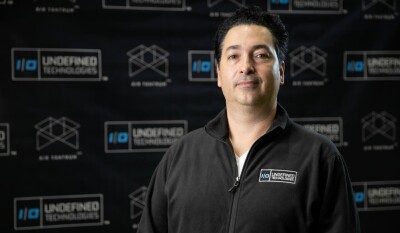In our never-ending quest for technologies that offer longer flying times for commercial unmanned aerial vehicles (UAVs), we have covered almost every idea out there trying to increment TITA (time in the air). Still, now we must admit that we missed one: Ion Thrust.
Ion Thrust is a propulsion system that accelerates ions using electricity and, so far, has been out of reach for drone manufacturers for a variety of reasons.
Now, Undefined Technologies Corp., a South Florida-based tech startup, is determined to focus entirely on designing and manufacturing a commercial UAV that would use Ion propulsion as the primary source of lift.
 We reached out to Tomas Pribanic, Founder and CEO of Undefined Technologies (UT), for an exclusive interview about his company, the technology behind the idea and the drivers that moved him and his team to go in this unorthodox direction.
We reached out to Tomas Pribanic, Founder and CEO of Undefined Technologies (UT), for an exclusive interview about his company, the technology behind the idea and the drivers that moved him and his team to go in this unorthodox direction.
“The issue that most people had mentioned as a deterrent to massive acceptance of drones is the associated noise from fast rotating propellers,” Tomas explained. “Ion thrust is fully electric and near silent. Still, it also requires high amounts of energy.”
Given this high consumption issue, just designing a vehicle was not enough; it would have to be accompanied by a specific process of usage and deployment.
“We looked into the fields of engineering, physics, and mathematics to find a way of using ion propulsion in atmospheric conditions, and we finally got the breakthrough to increase the thrust of ion propulsion systems to unprecedented levels,” he stated. “We took the example of a delivery drone mission, analyzed the various stages of that particular flight and found that the aircraft could switch between propulsion modes depending on the phase of flight, reducing energy consumption. The numbers were encouraging, so we set up to find funding.”
Tomas formed a partnership between Undefined Technologies and the University of Miami, which aided in expanding the company’s venture capital network. After achieving its successful first mission flight, the company closed its Seed Funding round to accelerate the development and commercialization of the technology.
“We were very fortunate to have a group of investors that from the beginning were enthusiastic about our business differentiators and the technology, but they were also emphatic that any design should be vertical take-off and landing,” he said with a smile. “This constraint created a new set of challenges for the team, but we created a platform that would comply with almost every requirement.”
UT is eager to disrupt the urban cargo delivery market and use drones for various supply chain activities, including delivering everything from online shopping packages and groceries to vital medicines.
“When we founded the company in 2018, we knew that it would be a couple of years before we were in a position to show a prototype, but now that’s all behind us and we are ready to face the next phase,” Tomas said with enthusiasm. “With the seed round behind us, UT is ready to launch its Series A funding early next year to engage in the next phase and address necessary issues to improve the technology further.”
“Our next ion propulsion aircraft will use materials that will allow us to build something stronger and lighter and, at the same time, increase capabilities while reducing weight, size, and boost thrust,” he concluded. “Exciting times are ahead as we perfect our vehicle and prove that this technology will have a disruptive role to play in our markets in the years ahead.”
It is reassuring to see and feel the enthusiasm for out-of-the-box technologies that are surely destined to make a difference. A video of the solution in action is below:















Comments